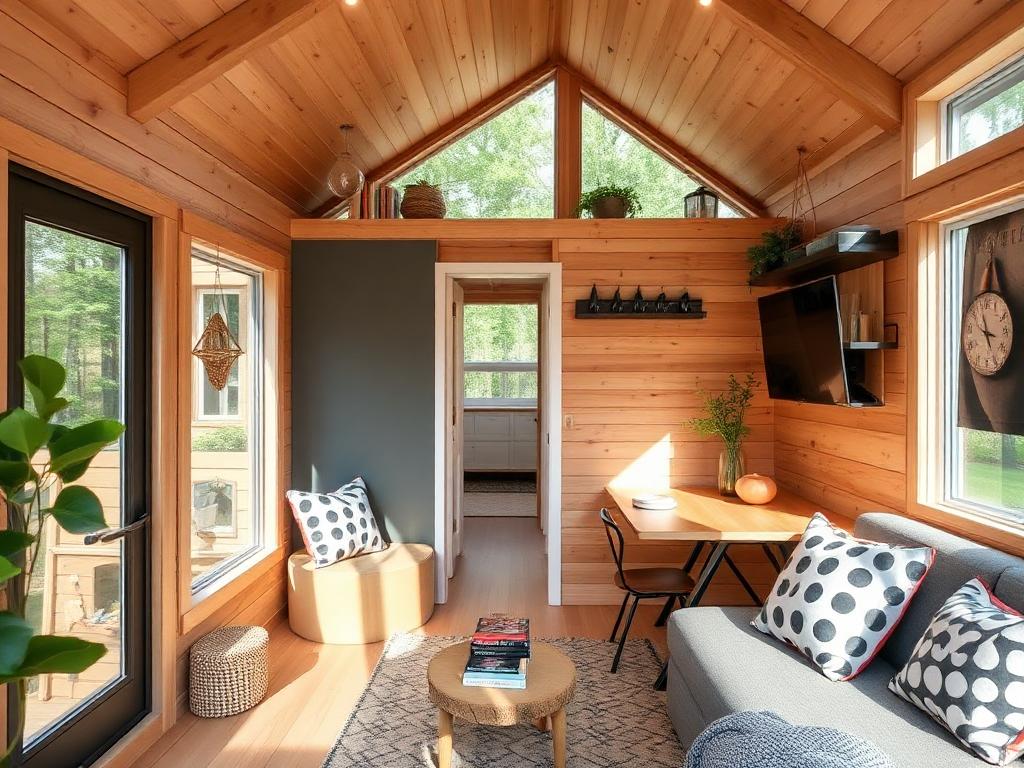Moving can be daunting at any stage of life, but it presents unique challenges and opportunities for seniors. Everything You Need to Know When Moving As A Senior includes comprehensive planning and preparation to ensure a smooth transition. This article will guide you through the essential steps, considerations, and strategies to make your move as stress-free and efficient as possible.
Creating a Moving Plan
Creating a moving plan is critical to ensure a smooth and organized transition to a new home. A well-structured moving plan acts as a roadmap, detailing every task that needs to be accomplished before, during, and after the move.
This comprehensive approach helps manage time and resources effectively, reducing the stress that accompanies relocation. Start by setting a clear timeline, ideally beginning eight weeks before the moving day.
This timeline should include tasks such as securing a new home, hiring movers, and notifying utility companies of your move.
Early preparation also involves gathering moving supplies, decluttering your home, and creating an inventory of your belongings.
Decluttering is particularly important as it reduces the volume of items to be moved, potentially lowering moving costs and making the packing process more manageable (Millennial Homeowner, MoveBuddha).
Once the preliminary steps are completed, focus on more specific tasks to ensure everything is in order. About six weeks before the move, it's time to book your moving company for seniors if you haven't already done so.
This period is also ideal for addressing logistical details, such as arranging childcare and pet care for moving day, and ensuring that important documents and medical records are easily accessible. A
s the moving day approaches, around four weeks before, start packing non-essential items and labeling boxes clearly with their contents and the rooms they belong to. This labeling system will make unpacking much simpler and help you find essential items quickly in your new home. Additionally, make arrangements for setting up utilities at your new location to ensure that services like electricity, water, and internet are ready upon your arrival.
Following these steps meticulously will help create a seamless moving experience, ensuring that nothing is overlooked and the transition to your new home is as smooth as possible (AMRes, MoveBuddha).
Packing Tips for Seniors
When it comes to packing for a move as a senior, starting early and staying organized are crucial steps.
Begin by creating a comprehensive moving checklist that includes all necessary tasks, such as notifying utility companies, forwarding mail, and scheduling movers. It's helpful to tackle one room at a time, starting with areas that hold the least sentimental value, such as guest rooms or storage spaces.
This method allows you to ease into the packing process without overwhelming yourself. Gather all necessary packing materials in advance, including boxes of various sizes, packing paper, bubble wrap, and markers for labeling.
Clearly label each box with its contents and the room it belongs to, using color-coded labels to simplify the unpacking process (MattsMoving, Road Scholar).
For seniors, it's essential to pack strategically to minimize physical strain and ensure a smooth transition. Consider using compression packs to maximize space and keep your belongings organized within your suitcase.
When packing clothing, stick to a mix-and-match color theme to reduce the number of items you need to bring.
Pack dual-purpose garments and limit yourself to a couple of pairs of shoes. It's also advisable to pack an "open first" box with essentials you'll need immediately upon arrival at your new home, such as toiletries, a change of clothes, medications, important documents, and basic kitchen items.
This will help you settle in comfortably without having to search through multiple boxes. Additionally, ensure you have a lightweight, durable suitcase with spinner wheels to make transporting your belongings easier (Guide for Seniors, MattsMoving).
Emotional Aspects of Moving
Moving can be an emotional rollercoaster, involving a range of feelings from excitement and anticipation to anxiety and stress. The initial stage of moving often brings a sense of excitement as you look forward to a fresh start and new experiences.
However, as the moving date approaches, nostalgia and sadness can set in as you say goodbye to familiar surroundings and routines. This is especially true if you have spent a significant amount of time in your previous home.
The logistics of moving, such as packing and dealing with paperwork, can further exacerbate feelings of anxiety and stress. It's important to acknowledge these emotions and find healthy ways to manage them, such as maintaining connections with friends and family, replicating familiar routines in your new environment, and exploring your new surroundings to foster a sense of belonging (The Atman Group, Life As A Human).
To manage the emotional challenges of moving, it's crucial to create a supportive environment for yourself. This includes establishing a new support system in your new location by attending local events, joining clubs, or simply reaching out to neighbors.
Creating a homey atmosphere in your new place as quickly as possible can also help ease the transition. This might involve stocking your kitchen with favorite foods, setting up internet and entertainment services, and decorating your new space in a way that feels familiar and comforting.
Additionally, taking time for self-care is essential; regular exercise, meditation, and maintaining healthy eating habits can significantly reduce stress and improve your overall well-being. If the emotional burden becomes too heavy, seeking professional help from a therapist or counselor can provide valuable support and coping strategies.
Ultimately, viewing the move as an opportunity for personal growth and new adventures can transform the emotional experience into a positive one (Meyer Movers, Kat McCormick).
.jpg)
Settling into the New Home
Settling into a new home can be both an exciting and overwhelming process. To ease the transition, it's essential to start by planning.
Creating a comprehensive checklist can help you prioritize tasks such as changing your address, setting up utilities, and unpacking. Ensure you notify the post office, banks, and utility companies of your new address to avoid missing important mail or payments.
Additionally, organizing essential documents, like moving van receipts and real estate papers, in a secure location is crucial to prevent them from getting misplaced during the move (NewHomeSource, AMRes).
Once you're in your new home, unpack systematically by focusing on one room at a time, starting with the kitchen and bedrooms.
This approach helps maintain order and reduces stress. Setting up your new home’s security, such as changing locks and installing security systems, can provide peace of mind. It's also beneficial to familiarize yourself with your home’s circuit breaker, water, and gas shutoffs to prepare for any emergencies.
Engaging with your new community by introducing yourself to neighbors and exploring local amenities can make the new environment feel more like home. Personalizing your space with decorations, photos, and your favorite furnishings will also help create a comfortable and welcoming atmosphere (HomeLight, NewHomeSource).
Connecting with the New Community
Connecting with your new community is a vital step in making your new place feel like home and establishing a sense of belonging. One effective strategy is to actively participate in local events and initiatives.
Programs like the Reconnecting Communities and Neighborhoods Grant Program by the U.S. Department of Transportation aim to restore community connectivity by removing barriers created by past infrastructure decisions.
Such initiatives often offer opportunities for community members to engage in planning and development activities, fostering a sense of ownership and involvement in the local area (Department of Transportation).
Another meaningful way to connect with your new community is by engaging in environmental and recreational projects.
For instance, the Camden Water Trail project in New Jersey has transformed the Cooper River into a hub of activity and education, offering kayaking and canoeing opportunities.
These initiatives not only improve access to natural resources but also bring people together through shared experiences and stewardship activities.
Programs like Spark Connecting Community prioritize projects that increase social interaction and connect people to their environment, further enhancing community ties (U.S. Fish & Wildlife Service, Vermont Community Foundation).
Special Considerations for Assisted Living
When considering a move to assisted living, there are several important factors to keep in mind to ensure a smooth and successful transition. One of the key considerations is the health and medical needs of the potential resident.
Assisted living facilities are generally suitable for individuals who require assistance with activities of daily living (ADLs) such as bathing, dressing, and medication management but do not need intensive medical care.
Facilities typically conduct comprehensive assessments to determine the level of care required, ensuring that residents with stable health conditions and manageable chronic illnesses receive appropriate support.
For those with severe cognitive impairments or extensive medical needs, such as advanced dementia or conditions requiring continuous medical supervision, a nursing home or specialized care facility may be more appropriate (SeniorSite, Justia).
Another crucial aspect is the financial consideration of assisted living. The cost can vary widely depending on the location, size of the living space, and the range of services offered. On average, assisted living costs around $4,401 per month or approximately $52,812 annually in the United States.
It is essential to thoroughly understand what these costs cover, including housing, meals, housekeeping, and daily assistance. Financial planning should involve evaluating available resources such as retirement funds, pensions, and home equity options.
Additionally, prospective residents should inquire about any potential additional fees for specific services and the facility’s history of rent increases to ensure long-term affordability.
Exploring various communities and comparing their offerings can help find a balance between cost and the level of care required (Seniorly, NCOA).
Environmental Considerations
When considering environmental considerations in 2024, it’s essential to focus on the key issues and actions being taken to address climate change and environmental degradation. One of the major concerns is the ongoing impact of climate change, with 2023 being recorded as the hottest year so far.
Predictions indicate that 2024 could see even more severe weather events. For example, initiatives from the United Nations Convention on Climate Change (COP28) include commitments from over 120 countries to triple renewable energy capacity and double energy efficiency within the next decade.
These commitments are crucial for reducing greenhouse gas emissions and mitigating climate change effects. Additionally, the International Energy Agency highlights the need for rapid scaling of renewable energy solutions to meet these goals (World Wildlife Fund, 2024).
Another critical area is the role of environmental justice and the protection of disadvantaged communities from pollution.
The U.S. Environmental Protection Agency (EPA) has prioritized addressing climate change, PFAS contamination, and coal ash pollution for 2024-2027. This includes initiatives to mitigate methane emissions from oil, gas facilities, and landfills, which are significant contributors to greenhouse gases.
The EPA also focuses on ensuring compliance with clean air and water standards, particularly in overburdened communities, to reduce health risks from hazardous pollutants.
Additionally, the fast fashion industry's environmental impact remains significant, with synthetic fibers contributing to ocean microplastic pollution and excessive water use. Sustainable fashion movements advocate for slow fashion and the use of eco-friendly materials to counteract these impacts (EPA, Earth.Org).






Share: